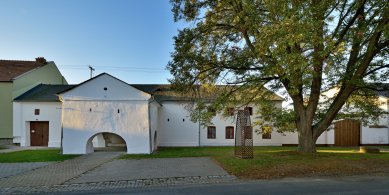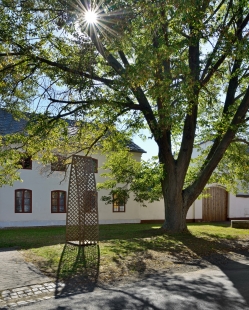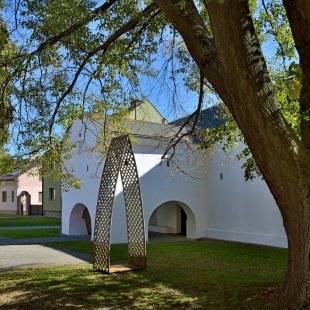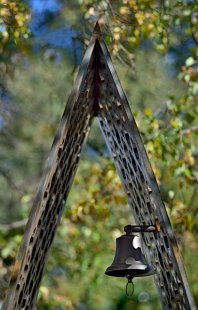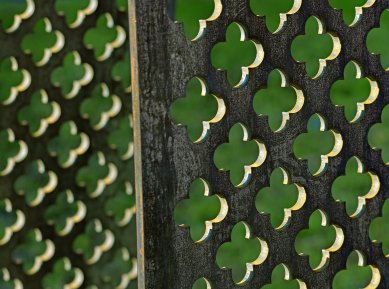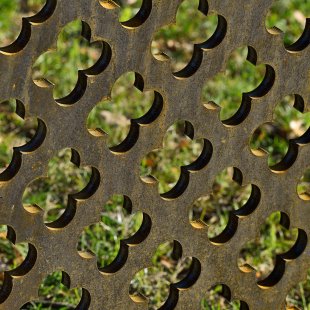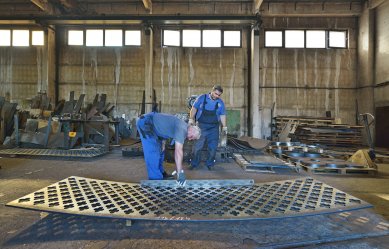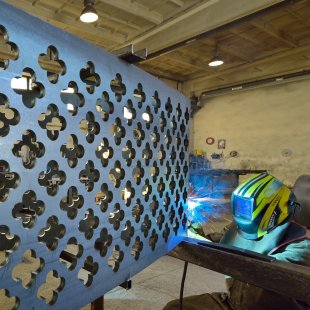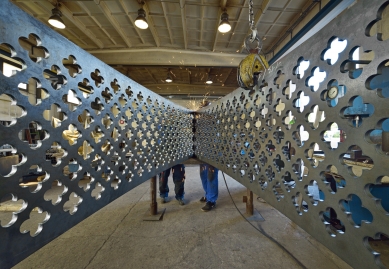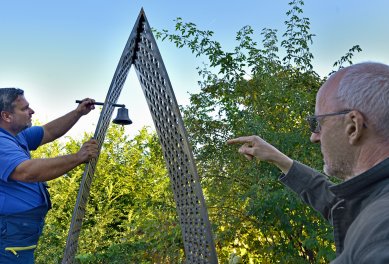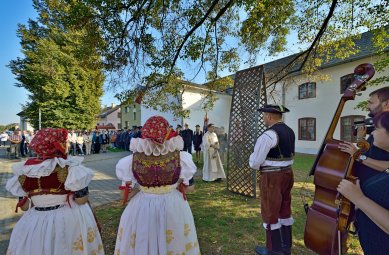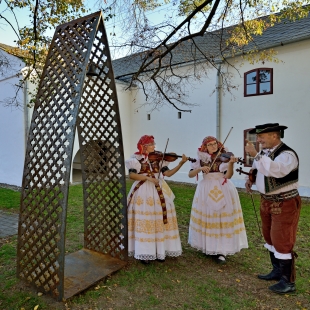
Bell Tower

The story of the bell tower in Bílovice-Lutotín in Moravia was born in western Bohemia. An enthusiastic patriot who found a historical photograph of a wayside shrine, which had succumbed to the ravages of time, planted an inspirational seed in our minds. The idea to build a new one was only half embraced by other locals, who constructed a copy of the original structure before it was possible to come up with a new design.
The task for a small sacred building thus remained in our minds and began to blossom during a meeting with representatives of the Bílovice-Lutotín community, from which the roots of one of us come. The residents confirmed the Moravian faith in traditions that need to be maintained. They understood that for traditions to survive, it is essential to create new initiatives. The initiative to complement the public square with traditional folk architecture through a contemporary sacred artifact ultimately led to a close collaboration between us authors and the locksmith master, for whom we were simultaneously designing a family house.
The construction of the bell tower consists of 15mm solid sheet metal. The method of perforation was carefully refined on samples. Mons. František Radkovský, the emeritus bishop of Plzeň, says of the form itself: “an unconventional approach, yet very beautiful; the beauty and elegance lie in the simple shapes with a Gothic arch and in that decoration in the shape of crosses – four-leaves.” In addition to emphasizing the spiritual significance and connection with Gothic through perforations in the shape of Gothic quadrature – those aforementioned four-leaves, we also considered the placement in public space, ensuring durability and low maintenance. Mons. Radkovský adds: “The execution is simple and sturdy, and that will deter destroyers of beautiful things. Such minor architecture is a gem of our landscape. It is good that it did not end in the Baroque, but continues on. Thanks to you. God bless you!”
The task for a small sacred building thus remained in our minds and began to blossom during a meeting with representatives of the Bílovice-Lutotín community, from which the roots of one of us come. The residents confirmed the Moravian faith in traditions that need to be maintained. They understood that for traditions to survive, it is essential to create new initiatives. The initiative to complement the public square with traditional folk architecture through a contemporary sacred artifact ultimately led to a close collaboration between us authors and the locksmith master, for whom we were simultaneously designing a family house.
The construction of the bell tower consists of 15mm solid sheet metal. The method of perforation was carefully refined on samples. Mons. František Radkovský, the emeritus bishop of Plzeň, says of the form itself: “an unconventional approach, yet very beautiful; the beauty and elegance lie in the simple shapes with a Gothic arch and in that decoration in the shape of crosses – four-leaves.” In addition to emphasizing the spiritual significance and connection with Gothic through perforations in the shape of Gothic quadrature – those aforementioned four-leaves, we also considered the placement in public space, ensuring durability and low maintenance. Mons. Radkovský adds: “The execution is simple and sturdy, and that will deter destroyers of beautiful things. Such minor architecture is a gem of our landscape. It is good that it did not end in the Baroque, but continues on. Thanks to you. God bless you!”
Stempel & Tesar architects
The English translation is powered by AI tool. Switch to Czech to view the original text source.
1 comment
add comment
Subject
Author
Date
...
D.
21.02.20 11:37
show all comments


